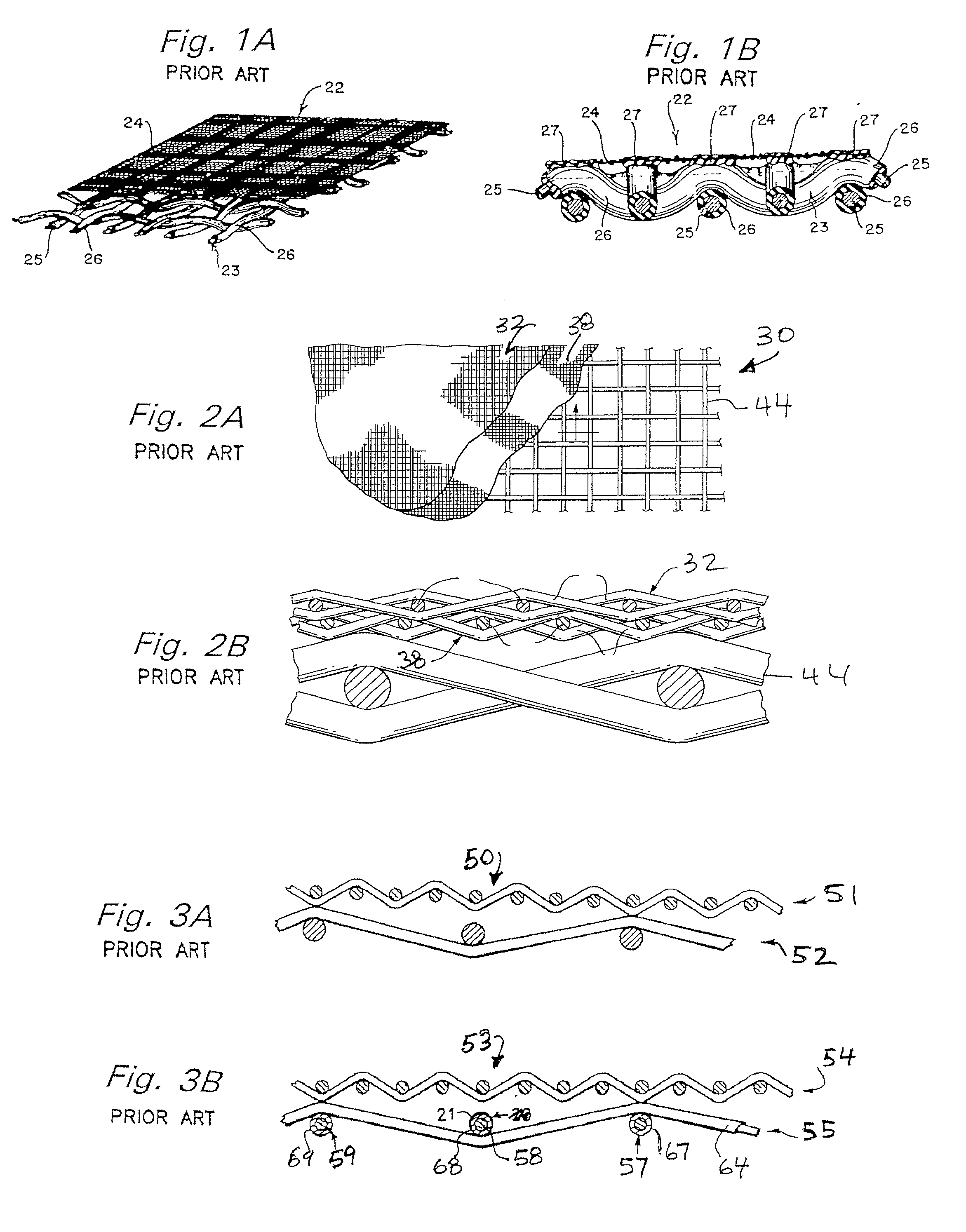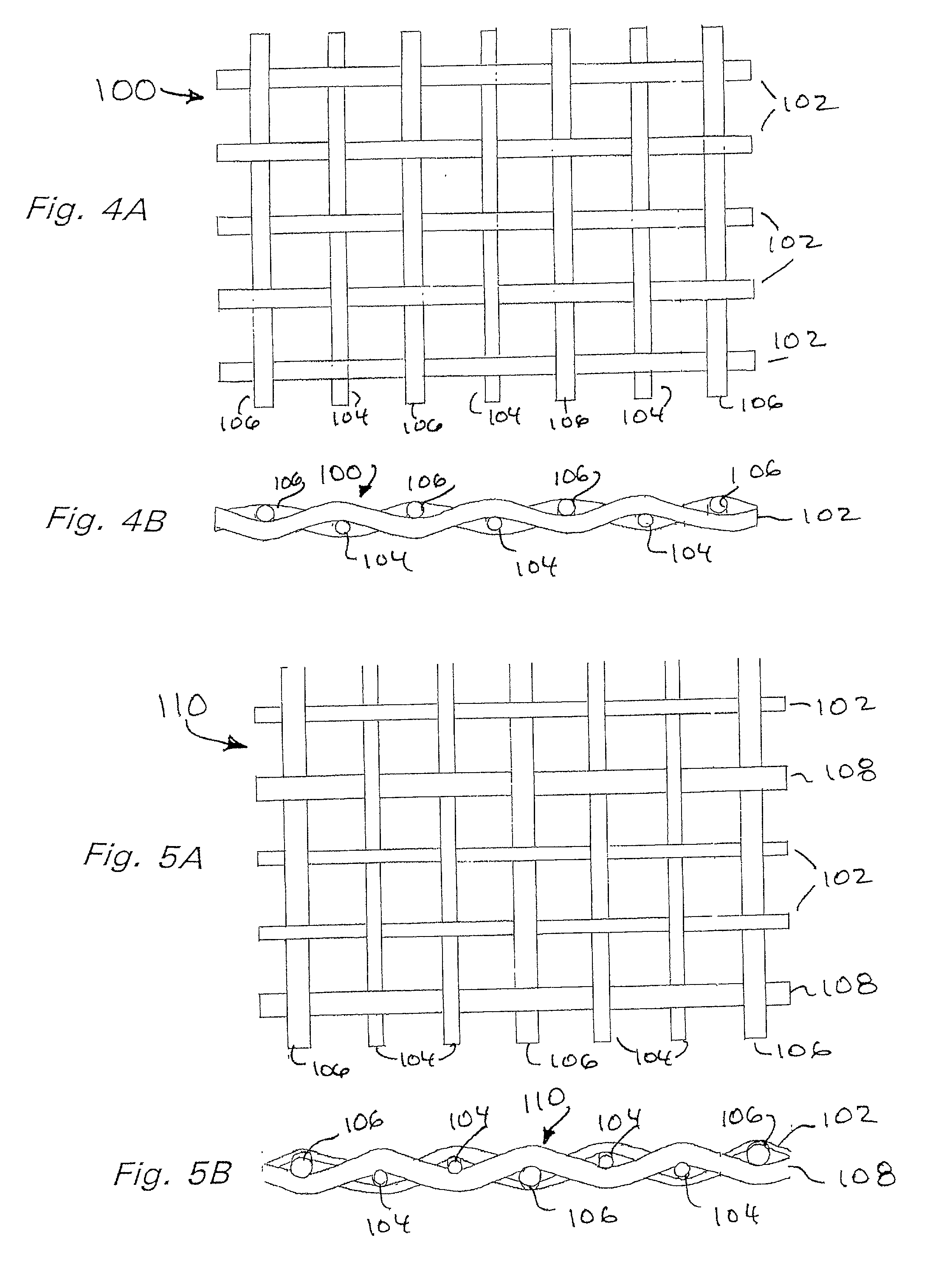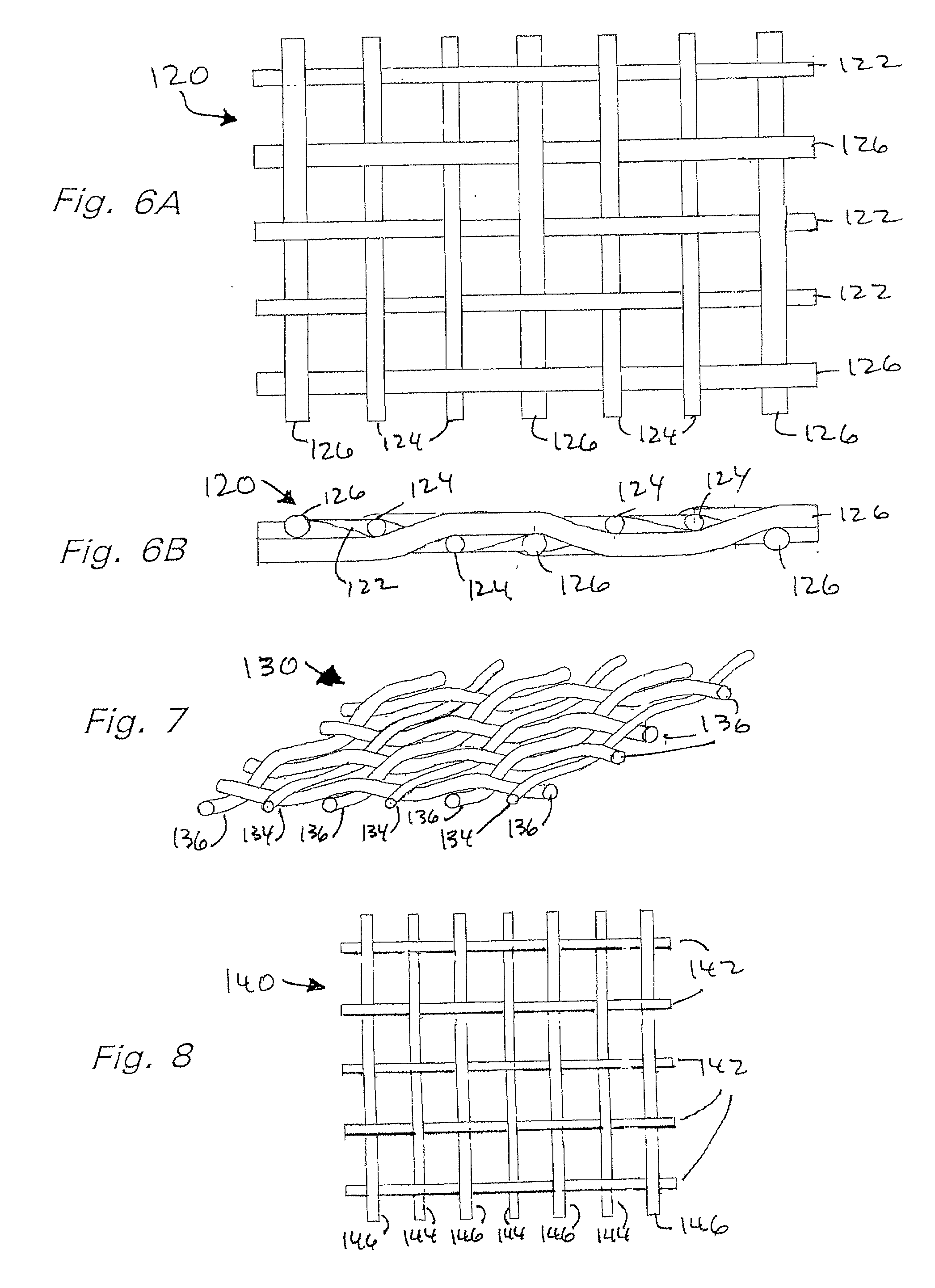Lost circulation fluid treatment
a technology of lost circulation and treatment, applied in the direction of filtration separation, separation process, borehole/well accessories, etc., can solve the problem that the fibrous lost circulation material can become trapped between the top two meshes of the screen, and achieve the effect of facilitating loosening and/or washing through of the fiber and further enhancing facilitation
- Summary
- Abstract
- Description
- Claims
- Application Information
AI Technical Summary
Benefits of technology
Problems solved by technology
Method used
Image
Examples
Embodiment Construction
[0056] FIGS. 19A-19D show a screen assembly 210 according to the present invention which has a lowermost screen 212, a middle screen 214, and a top most screen 216. Any one of these three screens may be deleted. The screen assembly 210 may have any known side hookstrips; and / or any known screen support (indicated by numeral 213) including, but not limited to, support strips, frame, and / or supporting perforated plate (each of which is not the legal equivalent of the others). Any two adjacent or all three screens may be bonded or connected together in any known manner.
[0057] The top screen 216 (see FIG. 19C) is woven of wires about 0.0012 to 0.0018 inches in diameter made of any suitable material, including but not limited to, metal, plastic, steel, and stainless steel, e.g. 304 or 316 ss. Any suitable known weave and weave pattern may be used. In the embodiment of FIG. 19C as viewed from above, the openings between intersecting wires are non-square and rectangular. In the embodiment ...
PUM
| Property | Measurement | Unit |
|---|---|---|
| diameter | aaaaa | aaaaa |
| diameter | aaaaa | aaaaa |
| thickness | aaaaa | aaaaa |
Abstract
Description
Claims
Application Information
 Login to View More
Login to View More - R&D
- Intellectual Property
- Life Sciences
- Materials
- Tech Scout
- Unparalleled Data Quality
- Higher Quality Content
- 60% Fewer Hallucinations
Browse by: Latest US Patents, China's latest patents, Technical Efficacy Thesaurus, Application Domain, Technology Topic, Popular Technical Reports.
© 2025 PatSnap. All rights reserved.Legal|Privacy policy|Modern Slavery Act Transparency Statement|Sitemap|About US| Contact US: help@patsnap.com



